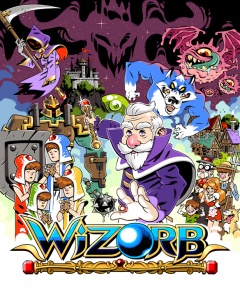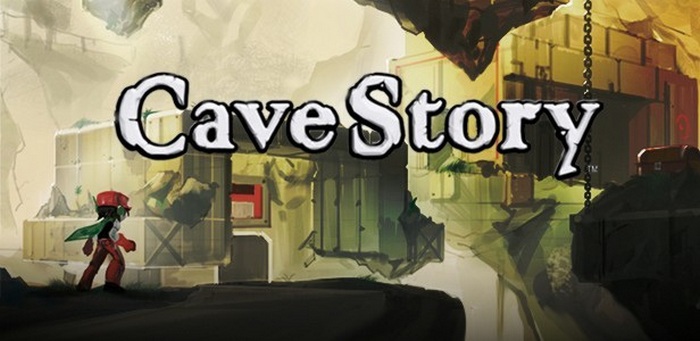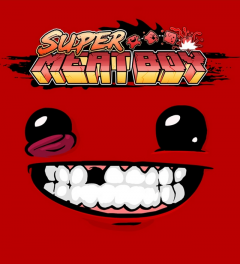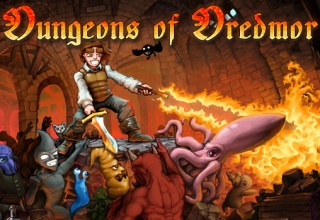linux
Eufloria
 Originally known as Dyson during its prototype stage, Eufloria is self-described as a "space gardening RTS." What that means is not very clear without some description, but in essence, Eufloria is about growth and destruction. Building up your own spores of pollen to seed across the galaxy and wreack havoc on your enemies. Any tree not your color is marked for death and total domination is necessary for your own survival.
Originally known as Dyson during its prototype stage, Eufloria is self-described as a "space gardening RTS." What that means is not very clear without some description, but in essence, Eufloria is about growth and destruction. Building up your own spores of pollen to seed across the galaxy and wreack havoc on your enemies. Any tree not your color is marked for death and total domination is necessary for your own survival.
Well, that might sound cooler than it actually is, but Eufloria is our latest go-around at Indie Impressions. Developed by a trio of indie devs, Eufloria was released in 2009 for Windows and later released on Linux, OSX, iOS, Android, and PlayStation Network. Here is Steve and Greg's take on the game after playing a few hours.
Trine 2
 Growing up, playing a game cooperatively usually meant sitting down
with a friend in front of my NES playing Contra, Teenage Mutant Ninja
Turtles, or Chip 'n Dale Rescue Rangers. The game was either made easier
with a second player (twice as many bullets!), or twice as hard (fellow
chipmunks can be used as weapons!). But as games have evolved from the
living room to the internet, cooperative play has changed too.
Growing up, playing a game cooperatively usually meant sitting down
with a friend in front of my NES playing Contra, Teenage Mutant Ninja
Turtles, or Chip 'n Dale Rescue Rangers. The game was either made easier
with a second player (twice as many bullets!), or twice as hard (fellow
chipmunks can be used as weapons!). But as games have evolved from the
living room to the internet, cooperative play has changed too.
Portal 2 was designed with two campaigns in mind, one for the single player and the other for multiplayer, specifically a cooperative experience with no traditional way to communicate available. Both sets of levels were brilliant in their own right, and excelled in creating a unique undertaking. On the other hand, the original Trine was made for local gaming only. Friends gathered in front of the TV or monitor and lead the trio of heroes on their adventure.
Trine 2 introduces online co-op for up to three gamers, fixes many complaints from the first game, and features some of the most gorgeous graphics I've ever seen in a video game. I finally got to tax my video card. Steve and I played through the entire game together online without voice communication, here are our thoughts.
Wizorb
 Breakout and Arkanoid and similar paddle games never resonated with me. Maybe because their Atari heyday ended before I started playing games, or maybe because I disliked the loose shot control. Whatever the case, the genre’s most polished and inspired entries still manage only a passing fancy.
Breakout and Arkanoid and similar paddle games never resonated with me. Maybe because their Atari heyday ended before I started playing games, or maybe because I disliked the loose shot control. Whatever the case, the genre’s most polished and inspired entries still manage only a passing fancy.
So I’m flummoxed by my lingering affinity for Wizorb, a three-dollar, three-hour curiosity. I completed the brief game in a weekend fling and have no real desire to revisit it, yet it’s still on my mind. I do relish the lively lo-fi style and RPG window dressing, but the game is still a pretty standard brick breaker at its core.
I’m not terribly impressed by this new appstore era, this flood of amateur developments selling for less than a vending machine lunch and rarely lasting as long. But Wizorb is one of the few $3 games that’s more filling than its price tag and play time imply. A few thoughtful little gameplay functions that address the genre’s weaknesses are what make it shine among its Breakout-clone peers and its bottom-dollar indie competition both.
Cave Story+
 In the last few years, I’ve had trouble focusing on beating games. This isn’t necessarily a bad thing, but I’ve built up such a huge backlog from Steam sales and Humble Bundles, that I was getting closer to owning more games that I hadn’t conquered that had. This was personally my big reason for green-lighting the new Indie Impression feature: it would give me an easy way to at least try out lots of games without necessarily committing even an entire hour.
In the last few years, I’ve had trouble focusing on beating games. This isn’t necessarily a bad thing, but I’ve built up such a huge backlog from Steam sales and Humble Bundles, that I was getting closer to owning more games that I hadn’t conquered that had. This was personally my big reason for green-lighting the new Indie Impression feature: it would give me an easy way to at least try out lots of games without necessarily committing even an entire hour.
Having recently featuring Cave Story+, I quickly plowed through it after finishing up my impressions. It is one of those games you hear about for years as being great, and it keeps getting re-released with newer graphics on more platforms, once Cave Story+ hit Steam the time was right.
My initial impressions were positive, viewing the game as a pretty solid Metroidvania with tight controls, let’s see if I found the rest of the game as appealing.
Cogs
 3D, steampunk, tile-based puzzler. That's Cogs in a nutshell. Remember those little square puzzles from your youth where there was one empty spot to slide the other squares around to form a picture? Well, combine that with a bit of Pipe Dream and slap on a really slick interface, and you have on of the more unique puzzle games of the last few years. As part of the third Humble Bundle, you may well own this title and not even realize it.
3D, steampunk, tile-based puzzler. That's Cogs in a nutshell. Remember those little square puzzles from your youth where there was one empty spot to slide the other squares around to form a picture? Well, combine that with a bit of Pipe Dream and slap on a really slick interface, and you have on of the more unique puzzle games of the last few years. As part of the third Humble Bundle, you may well own this title and not even realize it.
Released in 2009 by Lazy 8 Studios on numerous platforms including iOS and PlayStation Home (yes, Home, that Second Life thing that hasn't received attention in three years), Cogs is a simple to play game that will challenge your wits and patience. If you can sit and play the sliding puzzle games for a bit, you'll enjoy Cogs for its extra depth on top of the base. If you can't stand that kind of puzzler, well, might as well just skip this game now.
First Hour is happy to present to you another entry in its Indie Impression series: Cogs.
Cave Story+
 Cave Story was originally released all the way back in 2004, with development starting five years before that by a single guy, Daisuke Amaya. The side-scrolling adventure has gained momentum over the years, and is now recognized as being one of the original independent games that has spawned what is nearly a total upheavel of the video game industry. With the Humble Indie Bundle, Steam, Desura, and a slew of very talented developers, indie games are making huge waves, and sales.
Cave Story was originally released all the way back in 2004, with development starting five years before that by a single guy, Daisuke Amaya. The side-scrolling adventure has gained momentum over the years, and is now recognized as being one of the original independent games that has spawned what is nearly a total upheavel of the video game industry. With the Humble Indie Bundle, Steam, Desura, and a slew of very talented developers, indie games are making huge waves, and sales.
While Cave Story is available on nearly every platform, it finally hit Steam a few months ago with the release of the fourth Humble Bundle. To note the higher resolution graphics and a new soundtrack, the game was re-titled Cave Story+, but there is an option to revert to the original look and sound.
We're very happy to present Cave Story+ as our third Indie Impression, following Super Meat Boy and Dungeons of Dredmor. Blackwell Legacy will be following in a few days.
Super Meat Boy
 I started playing Super Meat Boy for our new Indie Impression feature, planning on maybe putting in a half hour with the meat and then heading off to write down my thoughts. Two weeks later and 10 hours of gaming in the can, I beat all of Super Meat Boy’s light world levels, rescued Bandage Girl over a hundred times, and died 2,345 times (to be exact). And even though poor Meat Boy splattered every 15 seconds, I still had an awesome time.
I started playing Super Meat Boy for our new Indie Impression feature, planning on maybe putting in a half hour with the meat and then heading off to write down my thoughts. Two weeks later and 10 hours of gaming in the can, I beat all of Super Meat Boy’s light world levels, rescued Bandage Girl over a hundred times, and died 2,345 times (to be exact). And even though poor Meat Boy splattered every 15 seconds, I still had an awesome time.
It’s a testament to developer Team Meat’s ability that they can make a platformer not only crazy hard, but also very fun. Almost nothing is harder in game development than properly ramping the challenge up for every kind of gamer, but they pull it off with Super Meat Boy.
Released on Windows, Linux, OSX, and Xbox Live Arcade (a WiiWare release was planned and then scrapped when the game exceeded the platform’s size limits) in 2010, it has since sold over one million copies, not bad for an indie release. Here’s my review.
Dungeons of Dredmor
 Riding on the excitement of The Binding of Isaac, I decided to dive right into another roguelike, this time from indie developer Gaslamp Games. But unlike Binding of Isaac, Dungeons of Dredmor is a more traditional, turn-based dungeon crawler, complete with character classes, skill trees, item forging, and the hack and slash-style fun one would expect from classic franchises like Diablo or Baldur’s Gate. Well, maybe not that traditional. Dungeons of Dredmor is perhaps best described as a spoof of classic computer roll-playing games; nothing takes itself seriously...
Riding on the excitement of The Binding of Isaac, I decided to dive right into another roguelike, this time from indie developer Gaslamp Games. But unlike Binding of Isaac, Dungeons of Dredmor is a more traditional, turn-based dungeon crawler, complete with character classes, skill trees, item forging, and the hack and slash-style fun one would expect from classic franchises like Diablo or Baldur’s Gate. Well, maybe not that traditional. Dungeons of Dredmor is perhaps best described as a spoof of classic computer roll-playing games; nothing takes itself seriously...
Three other writers here posted their impressions of Dungeons of Dredmor last week in our new series: Indie Impression. You may consider these my extended impression that turned into a complete review.
Super Meat Boy
 Our second Indie Impression is of Super Meat Boy, the 2010 platformer from Team Meat. Known for its sadistic level design and smooth gameplay, Super Meat Boy has grown into a huge hit that's spread beyond the indie community, selling more than one million copies across all PC platforms and Xbox Live Arcade. We've got four impressions for that range from a few minutes to completing the game 100%, which is pretty much exactly how I envisioned this column working out. Greg was going to provide impressions also, but decided that since he ended up beating the game in about a week, he's going to provide a full review in the coming days.
Our second Indie Impression is of Super Meat Boy, the 2010 platformer from Team Meat. Known for its sadistic level design and smooth gameplay, Super Meat Boy has grown into a huge hit that's spread beyond the indie community, selling more than one million copies across all PC platforms and Xbox Live Arcade. We've got four impressions for that range from a few minutes to completing the game 100%, which is pretty much exactly how I envisioned this column working out. Greg was going to provide impressions also, but decided that since he ended up beating the game in about a week, he's going to provide a full review in the coming days.
Dungeons of Dredmor
 Welcome to Indie Impression, a brand new type of article for 2012. As the name implies, these articles will be impressions on some of the numerous indie games that have been rapidly appearing recently. We here have built ourselves very large collections through cheap package deals via Steam, Humble Bundle, Indie Royale, and more. Some have amazing production values, some don't. Some are incredibly fun, some aren't. But without question, these indie games generally offer creativity vastly beyond anything you'll find in mainstream gaming and will likely be the main driver behind industry innovation for a long time.
Welcome to Indie Impression, a brand new type of article for 2012. As the name implies, these articles will be impressions on some of the numerous indie games that have been rapidly appearing recently. We here have built ourselves very large collections through cheap package deals via Steam, Humble Bundle, Indie Royale, and more. Some have amazing production values, some don't. Some are incredibly fun, some aren't. But without question, these indie games generally offer creativity vastly beyond anything you'll find in mainstream gaming and will likely be the main driver behind industry innovation for a long time.
And as our indie backlogs have grown exponentially, we've decided to start sorting through our games and trying them out to get a good impression of each. To add credibility to our impressions, we will try to have at least two people play each game until they feel they have a solid, concrete opinion for writing. Impressions may be from ten minutes of gaming to ten hours, but in this case, we feel like it's important enough to have multiple strong opinions on each game. With that out of the way, let's continue to our very first candidate, Dungeons of Dredmor.
Dungeons of Dredmor is a roguelike from Gaslamp Games, released in July, 2011. Each writer has written impressions independently from each other.
